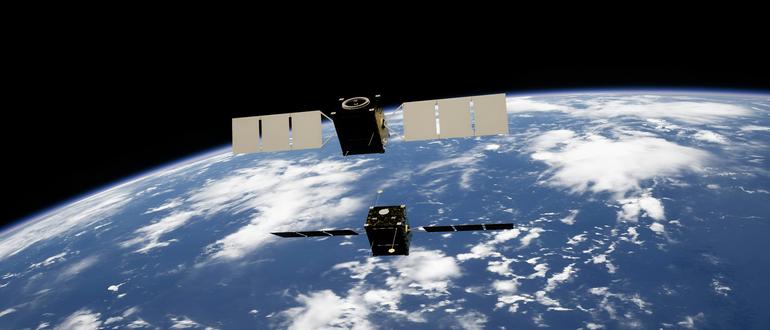
The European Space Agency in partnership with aerospace startup Constellation Technologies & Operations is set to launch a satellite into orbit to begin building a global network similar to Starlink’s. The project represents a pioneering effort by European organizations to catch up to the pace of U.S. advances in near-space connectivity.
With the first satellite scheduled for launch in June, the project will test a near-space telecommunications infrastructure that has been designed and developed solely in Europe. Significantly, this trial launch—dubbed “the Early Test”—will send a regenerative payload into near space. In contrast with a transparent payload, which merely boosts signal flow, regenerative payloads are mini space stations, and are capable of greatly improving signal quality as they offer better connectivity by reducing latency and enhancing signal reliability.
This European satellite will receive and transmit 5G mmWave, which is wireless technology that handles data signals between 24 GHz and 100 GHz. Combining 5G with millimeter waves (mmWaves) enables high bandwidth transmission typically greater than 1 Gbps and, under optimal conditions, capable of 10 Gbps. This supports sufficient data transmission for video streaming, the Internet of Things and virtual reality. Additionally, 5G mmWave networks offer an enormous amount of open spectrum so they can scale as global connectivity continues to scale.
To support this connectivity, the Early Test will work to integrate 5G bandwidth with a Low Earth Orbit (LEO) satellite, which orbits the Earth at an altitude of up to 2,000 kilometers. Because LEO satellites fly closer to the Earth than geostationary satellites (GEO)–which also support Internet connectivity—they enable enhanced data transmission and lower latency.
This partnership between the European Space Agency (ESA) and Constellation Technologies & Operations (CTO) is new territory for both organizations. CTO, a French startup founded in 2022, has just 35+ employees, according to its website. The company has filed for two patent applications, and has posted job openings for Satellite Architect and Space Electronics Engineer. This first launch will be an attempt to put a single satellite in orbit, but a functioning constellation typically contains hundreds of satellites.
Likewise the ESA, with its 2025 budget of 7.7 billion euros, which is modest by the standards of satellite networks. (Amazon recently began building its own satellite network with a forecast cost in the range of $20 billion.) The ESA recently announced a joint venture with the European Union to launch its first satellite network, called IRIS, to be operational by 2030. The IRIS constellation is expected to comprise 290 satellites.
The war in Ukraine and other security concerns has prompted the EU to realize it cannot rely on the Starlink satellite network, which is currently a critically important resource for Ukrainian troops. In 2023, Elon Musk, the CEO of SpaceX, which owns Starlink, refused to activate Starlink in Crimea as that region faced aggression from Russia. This impasse was part of a larger shift among European leaders toward developing greater technological independence and boosting competitive efforts with U.S. and Chinese technology companies.
The EU’s ambition to build a satellite constellation—of which the ESA and CTO partnership is a contributing element—faces a dominant competitor in Starlink. Since its 2019 launch, Starlink has launched more than 8,000 satellites, and has more than 6,000 satellites in operation, serving some 5 million users across the globe.

